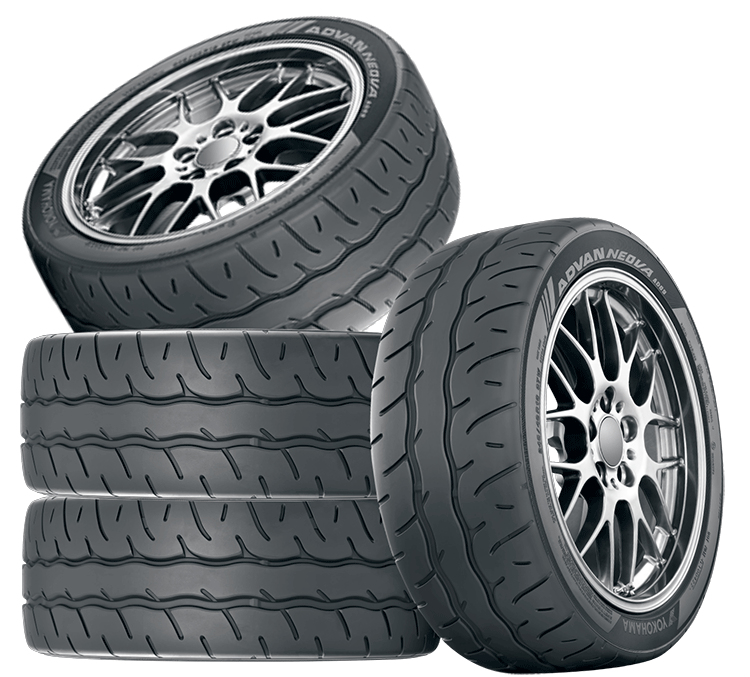Tire Size Explained: Your Complete Guide
Understanding Tire Size Markings: Decoding the Numbers and Letters
Your tires are the only point of contact between your vehicle and the road, making their size a critical factor for safety, handling, and overall driving experience. Choosing the correct tire size not only ensures optimal performance but also maximizes fuel efficiency and helps you stay compliant with Canadian regulations.
At Yokohama Canada, we understand that navigating tire sizes can be confusing, especially with various sizing systems in use. That's why we've created this comprehensive guide to demystify tire sizes and empower you to make informed decisions about your tires.
Whether you're replacing worn tires, upgrading to a different size, or simply curious about what those numbers and letters on your sidewall mean, this guide will provide you with the knowledge you need.
What You Will Learn in this Guide
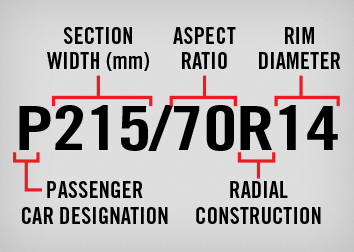 Example: P215/70R14 |
How to Read Tire SizeYour tire's sidewall is like its identification card, containing essential information about its size, type, and capabilities. Understanding these markings is key to finding the right tires for your vehicle and driving needs. Sidewall Markings DecodedLet's break down the typical alphanumeric code you'll find on a tire's sidewall: P: Tire Type – This indicates the tire is a P-Metric tire, designed for passenger vehicles. Other common types include LT (Light Truck) and ST (Special Trailer). 215: Tire Width – This is the width of the tire in millimeters, measured from sidewall to sidewall. In this case, the tire is 215 millimeters wide. 70: Aspect Ratio – This two-digit number represents the tire's height (from the rim to the tread) as a percentage of its width. In our example, the tire's height is 70% of its width. A lower aspect ratio generally means a shorter sidewall and sportier handling, while a higher aspect ratio often provides a more comfortable ride. R: Construction Type – This indicates the tire is of radial construction, the most common type for modern vehicles. 14: Rim Diameter – This is the diameter of the wheel in inches that the tire is designed to fit. By understanding these markings, you'll be able to quickly identify the size and specifications of any tire, making it easier to choose the right ones for your vehicle and driving needs. |
What Do Tire Sizes Represent?
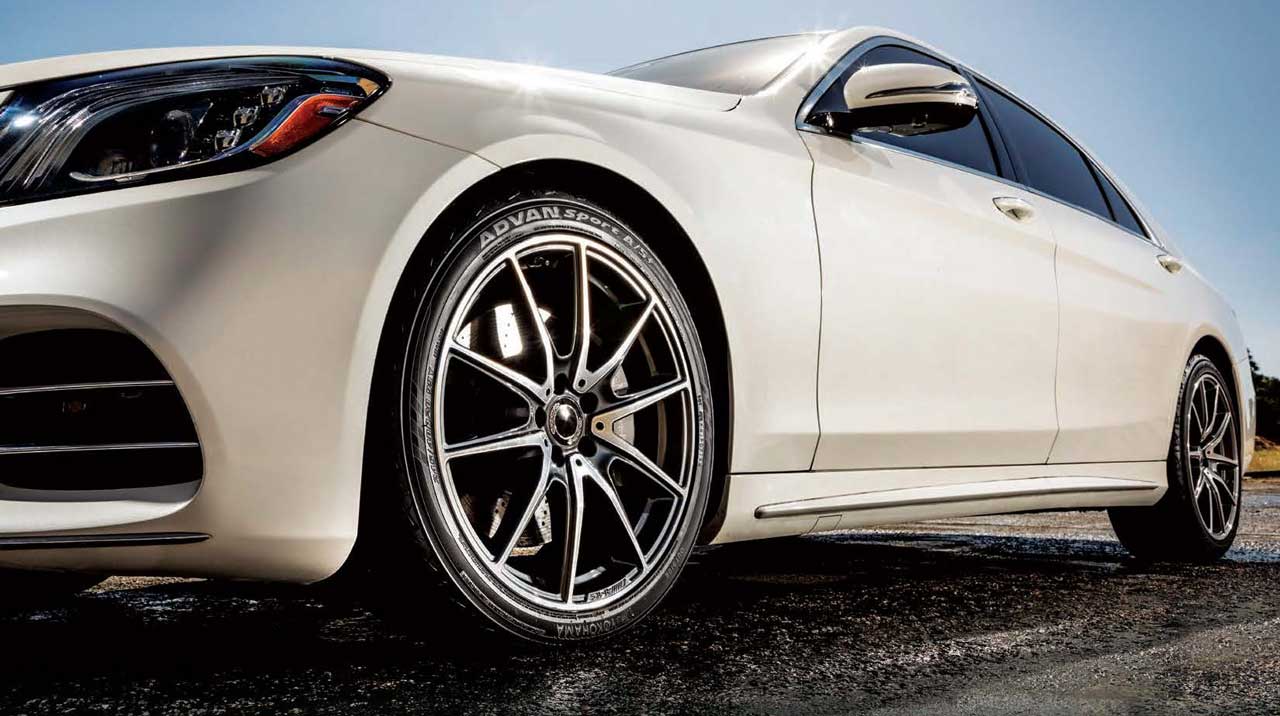
Each element of a tire size marking plays a crucial role in determining its fit, function, and performance. Let's delve deeper into what each of those numbers and letters signifies:
Width
The tire's width, measured in millimeters, directly impacts its contact patch with the road. A wider tire generally provides:
- Increased Traction: More rubber on the road means better grip, especially in dry conditions and during acceleration or braking.
- Enhanced Handling: Wider tires can improve cornering stability and responsiveness.
- Aesthetic Appeal: Wider tires often give a vehicle a more aggressive or sporty look.
However, wider tires can also increase rolling resistance, slightly reducing fuel efficiency.
Aspect Ratio
The aspect ratio, expressed as a percentage, determines the tire's sidewall height relative to its width. A tire with a higher aspect ratio (e.g., 70) will have a taller sidewall, while a lower aspect ratio (e.g., 50) will have a shorter sidewall.
- Taller Sidewall (Higher Aspect Ratio): Generally offers a more comfortable ride by absorbing more road imperfections.
- Shorter Sidewall (Lower Aspect Ratio): Typically provides sharper handling and quicker steering response but may sacrifice some ride comfort.
Rim Diameter
The rim diameter, measured in inches, dictates the size of the wheel the tire is designed to fit.
- Fitment: It's crucial to choose tires with the correct rim diameter to ensure they fit properly and safely on your vehicle's wheels.
- Speedometer Accuracy: The rim diameter affects the accuracy of your speedometer. If you change tire sizes, your speedometer may need to be recalibrated.
- Vehicle Dynamics: Larger rim diameters can affect acceleration, braking, and overall handling characteristics.
Load Index and Speed Rating
These are crucial safety ratings found on most tires:
- Load Index: Indicates the maximum weight a tire can carry at its specified pressure. Always choose tires with a load index that meets or exceeds your vehicle manufacturer's recommendations.
- Speed Rating: Indicates the maximum speed a tire is designed to handle safely under specific conditions. Ensure your tires have a speed rating appropriate for your driving habits and local speed limits.
Understanding these elements of tire sizing will empower you to make informed decisions when choosing tires for your vehicle, ensuring optimal safety, performance, and comfort on Canadian roads.
 Discover Yokohama's Best Winter Tires |
How to Measure Tire SizeWhile your tire's sidewall markings provide essential information, there may be times when you need to verify the dimensions yourself or confirm the size of a tire without markings. Here's how to measure the key tire dimensions: Measuring Tire Width
Measuring Aspect Ratio (Calculating)
Determining Rim Diameter
Important Note: Always double-check your measurements and consult your vehicle's owner's manual or a Yokohama Canada dealer if you have any doubts about the correct tire size for your vehicle. |
What Size Tires Fit My Car?
Choosing the correct tire size for your vehicle is crucial for safety, performance, and compliance with Canadian regulations.
Here are the most reliable ways to determine the right tire size for your car:
- Reference Your Owner's Manual: The owner's manual that came with your vehicle is the most reliable source for the manufacturer's recommended tire size. It usually includes a chart listing the appropriate tire sizes for your specific model and trim level. This information is crucial for maintaining your vehicle's handling, stability, and safety features.
- Use Online Tire Size Calculators (If Available): Yokohama Canada may offer a tire size finder tool on its website. If not, several reputable third-party websites provide tire size calculators. These tools typically require you to input your vehicle's make, model, and year to generate a list of compatible tire sizes.
- Consult a Yokohama Dealer: If you're unsure about interpreting the information in your owner's manual or using online tools, don't hesitate to contact your local Yokohama dealer. Their experts can provide personalized recommendations based on your vehicle, driving habits, and preferences. They can also help you explore different tire options within your size range and ensure proper installation.
Important Considerations:
- While you may have some flexibility in choosing tire sizes, it's crucial to stay within the manufacturer's recommended range to avoid potential issues with speedometer accuracy, handling, and safety features.
- If you're considering upsizing or plus-sizing your tires, consult with a professional to ensure the new tires are compatible with your vehicle's wheels, suspension, and braking systems.
- Always prioritize safety when choosing tires, and don't hesitate to seek expert advice if you have any doubts.
Tire Sizing Systems
Different regions and vehicle types utilize distinct tire sizing systems. Understanding these systems is essential to ensure you choose the right tires for your vehicle.
Here's an overview of the most common tire sizing systems:
P-Metric Sizing SystemThe P-Metric (Passenger Metric) system, introduced in 1976, is widely used for passenger vehicles in North America. It combines metric measurements (e.g., tire width in millimeters) with imperial units (e.g., rim diameter in inches). P-Metric tires are designed for lower rolling resistance and higher inflation pressures compared to older tire sizing systems. |

Example: P215/70R14 |
ISO Metric Sizing SystemThe ISO (International Organization for Standardization) Metric system is used globally and combines metric measurements with a service description that includes the load index and speed rating. |
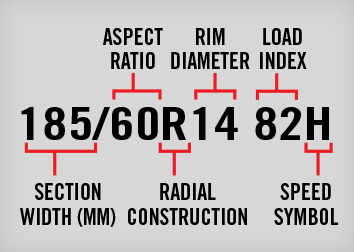
Example: 185/60R14 82H |
LT-Metric Sizing SystemThe LT-Metric system is similar to the P-Metric system, but it's used for light trucks. The "P" designation is replaced with "LT" to indicate that the tire is designed for the higher loads and pressures typically associated with trucks. |

Example: LT215/75R15 |
Light Truck Numeric Sizing SystemThe Light Truck Numeric system uses a combination of numbers and letters to denote tire size, similar to the P-Metric system. |
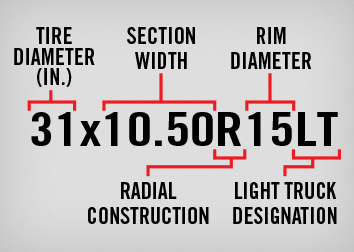
Example: 31x10.50R15LT |
Light Truck High Flotation SystemThis system is similar to the Light Truck Numeric system but includes the tire's outer diameter in the size designation. These tires are designed for off-road use and have a larger footprint to provide better traction on soft surfaces like sand or mud. |
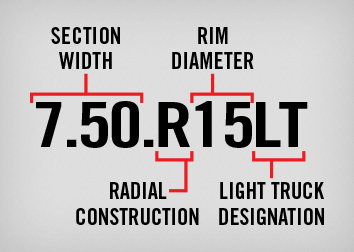
Example: 7.50.R15LT |
High Flotation vs. LT-Metric vs. LT-Numeric
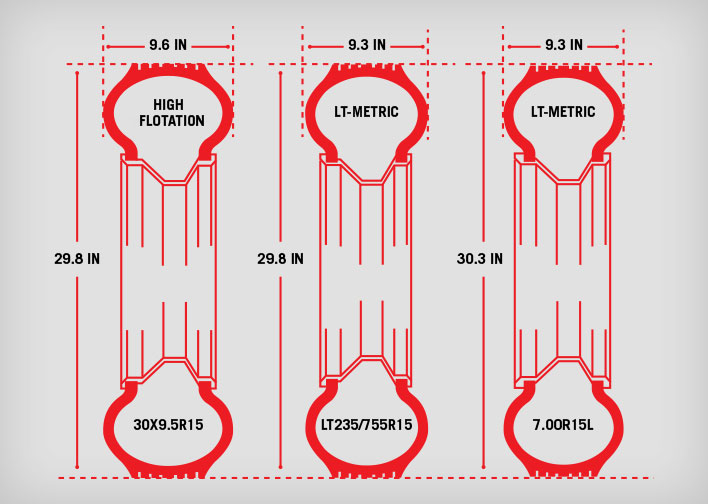
High Flotation tires are typically wider than LT-Metric and LT-Numeric tires with the same numerical designation. They also often require wider wheel widths for proper fitment.
Understanding these different tire sizing systems will help you decode the markings on your tires and ensure you choose the right size for your vehicle and driving needs. Always refer to your vehicle owner's manual or consult with a Yokohama Canada dealer if you have any questions.
Expert Advice
While understanding tire sizes and their various systems is essential, choosing the right size for your specific needs requires considering a few additional factors.
Tips for Choosing the Right Tire Size:
- Driving Habits: Consider your typical driving style. If you frequently drive on highways, prioritize tires with a higher speed rating and lower rolling resistance for better fuel efficiency. For off-road adventures, choose tires with aggressive tread patterns and reinforced sidewalls.
- Terrain: Think about the types of terrain you encounter regularly. If you drive on mostly paved roads, all-season tires are a versatile choice. For frequent snow and ice, dedicated winter tires with the 3PMSF symbol are essential in Canada. If you venture off-road, consider all-terrain or mud-terrain tires designed for rugged conditions.
- Weather Conditions: Canadian weather can be unpredictable, so choose tires that can handle both hot summers and harsh winters. All-season tires are a popular choice for year-round use, but dedicated winter tires are highly recommended for optimal safety and performance in snow and ice.
- Load Requirements: Ensure the tires you choose can safely carry the weight of your vehicle and any additional cargo. Refer to your owner's manual or consult with a Yokohama dealer for guidance.
- Canadian Regulations: Familiarize yourself with local tire regulations, especially concerning winter tire requirements in your province or territory.
Consult a Yokohama Dealer:
The best way to ensure you're choosing the right tire size is to consult with the experts at your local Yokohama dealer. They can provide personalized recommendations based on your vehicle, driving habits, and local conditions.
They can also help you explore different tire options within your size range and ensure proper installation for optimal performance and safety.
Don't hesitate to reach out to a Yokohama dealer near you for expert advice and assistance in selecting the perfect tires for your vehicle and your driving needs.
Ready to find your perfect tires?
Find Your Nearest Dealer:
Our knowledgeable Yokohama dealers are ready to assist you in choosing the right tires for your vehicle and driving needs. They can provide expert advice, professional installation, and answer any questions you may have.
Explore our wide selection of tires, including the versatile and capable GEOLANDAR line, to find the perfect fit for your vehicle and driving style. Let Yokohama Canada help you make the most of your driving experience with tires that are built to perform.

 Automotive
Automotive  Commercial
Commercial  OTR
OTR 